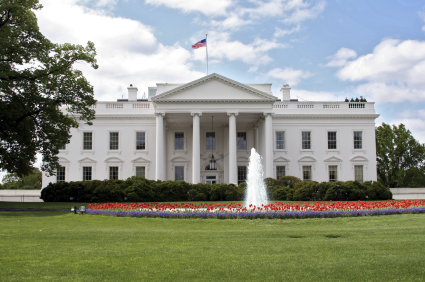
Obama’s 2013 budget reveals priorities for environment, financial reform, and health care.
President Obama’s recently released budget for FY 2013 treats environment protection, financial reform, and health care as the administration’s regulatory priorities.
The Environmental Protection Agency’s discretionary budget request for FY 2013 is $8.3 billion. This is a decrease of $105 million, or 1.2 percent, from 2012. Despite the overall decrease, “[f]unding is increased for core priorities, such as the agency’s operating budget which includes funds for the enforcement of environmental and public health protection.” The administration’s “core priorities” include the reduction of greenhouse gas emissions to “17 percent below 2005 levels by 2020 and 83 percent by 2050.”
The Administration’s budget request includes increases for several of the agencies responsible for implementing the Dodd-Frank financial reform law. The Department of the Treasury would receive a 6.9 percent budget increase (though, excluding the Internal Revenue Service, the budget request is actually 2.7 percent below the 2012 level).
Independent agencies with rulemaking authority under Dodd-Frank would also receive increased budgets. The Commodities Futures Trading Commission (CFTC) requested an overall budget increase of $102.7 million, or roughly a 50 percent increase from its 2012 level. The CFTC also proposed adding 305 new staff members, an increase of 43 percent. The CFTC explained that its “new responsibilities to oversee both swaps and futures markets” under Dodd-Frank “necessitated an agency restructuring to ensure the Commission uses its resources as efficiently as possible.”
Commissioner Scott O’Malia dissented from the administration’s budget request for CFTC. According to Commissioner O’Malia, the budget “makes an unsubstantiated case for a massive expansion in staffing that is both unrealistic and unsustainable in this deficit environment.”
Consumer Financial Protection Bureau (CFPB) Director Richard Cordray would see an increase of $91.3 million (26 percent) and 417 new employees (44 percent). The largest portion of this increase – an additional $47.1 million and 238 employees – would go to the CFPB’s Supervision, Enforcement, and Fair Lending & Equal Opportunity goals.
To implement the Patient Protection and Affordable Care Act (PPACA), the administration announced that Department of Health and Human Services (HHS) will be focusing on “building capacity and creating infrastructure to establish [insurance] exchanges.” The Centers for Medicare & Medicaid Services (CMS), perhaps the division of HHS most involved in establishing the exchanges, would see a $993 million increase, by far the largest increase requested by any HHS division.
President Obama’s budget reflects his administration’s emphasis on building a more robust regulatory apparatus to implement his political achievements of the Dodd-Frank Act and the PPACA.





